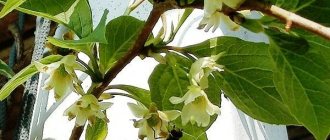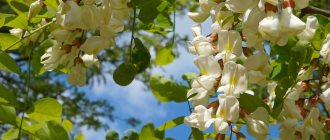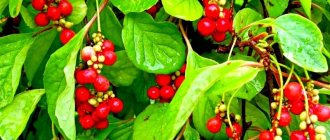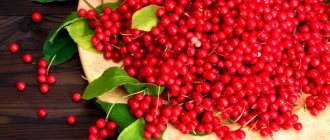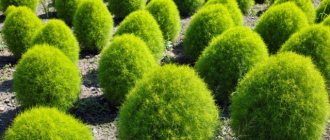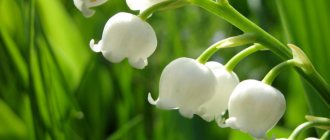Mullein is a perennial plant, but there are also annual species.
Author of the article
Maxim Sverchkov
Professional biologist and breeder with extensive experience and experience.
The strong and tall flower grows naturally in the United States and parts of East Asia. It is translated from Latin as Verbascum, but in Russia this is a less common name.
Bright and fragrant flowers, like a magnet, attract songbirds and honey bees. Mullein is a medicinal plant.
Description of the mullein plant
The plant of the Norichnikov family includes 300 species. Found in meadows and sunny edges.
A straight, dense stem emerges from a strong round root, reaching a height of up to 3 m. The leaves, covered with small piles, grow on the stem from bottom to top from large to smaller.
The leaf is dark or gray-green in color, oval or heart-shaped, with a petiole reaching to the middle of the leaf blade. In the second year of development, inflorescences are formed. The buds grow in tiers, forming the shape of a spike.
The funnel-shaped flower consists of yellow petals and stamens of different sizes.
We also talked about another perennial flower - Vatochnik.
Mullein flowers open in the morning and fall in the evening, but a new one blooms to take their place the next day. Blooms throughout the summer. In autumn, instead of flowers, a densely pubescent seed capsule is formed, inside which there are yellow-brown, rough “babies”.
Active ingredients
The corollas of mullein flowers contain up to 2.5% mucilage (and in the leaves up to 8%), which includes D-galactose, arabinose, D-glucose, D-xylose, L-rhamnose, D-mannose, uronic acid; 0.5-4% flavonoids (hesperidin, verbascoside, luteolin, apigenin, kaempferol, quercetin, rutin, chrysoeriol), polyphenolcarbronic acids (vanillic, ferulic, caffeic, hydroxybenzoic), triterpene saponins (verbascosaponin and others), carotenoids (α-cocetin , β-carotene), iridoid glycosides (aucuban, catalpol, isocatalpol), sugars (about 11%), up to 2.4% fatty acids (palmitic, linolenic, myristicic), essential oil, gum, malic and phosphoric acids, and others substances. In addition, the raw material contains macro and microelements: potassium (17.3 mg/g, magnesium (1.9 mg/g), iron (0.22 mg/g, manganese (49.2 μg/g), zinc (23 .6 µg/g), selenium (0.05 µg/g), etc.
Types of mullein plant
There are 300 species of this plant. In Russia, only a small part survived, which adapted to our climate.
Scepter mullein
Reaching 120 cm in length, the flower stem is covered with leaves that grow from bottom to top from large to small. The largest leaves are 40 cm, and the smallest ones are 4 cm.
The long, spike-shaped inflorescence is covered with yellow flowers. Each of the plant’s corollas reaches 5 cm in circumference. The plant has a light sweetish smell, which after drying becomes deeper and honey-like.
Mullein royal scepter
A medicinal form, it received its name for its resemblance to a golden scepter. The one and a half meter stem is covered in the upper two thirds with small flowers, up to 15 mm in diameter. Grows on roadsides and in sandy soils.
Common mullein or bear's ear
The plant from the base to the crown is covered with thick ash-white pubescence. Along the stem are oblong petiolate dark green leaves 5–10 cm wide. The largest ones reach 30 cm in length, and the smallest ones - 15 cm. The buds in the inflorescence do not exceed two centimeters in circumference.
Black mullein
The flower, reaching a height of 120 cm, received the prefix “black” to its name, because when the bud fades and falls off, black stamens remain. Heart-shaped leaves grow only on the lower third of the stem, reach a length of 30 cm and a width of 15 cm. An elongated inflorescence has small yellow buds.
There is a small brown spot at the base of each flower. The stalk of the stamen is covered with purple to black hair.
Mullein officinalis
The flower is biennial, the stem length does not exceed one meter. The trunk is densely covered with foliage. The inflorescence has many spike-shaped shoots, on which there are light yellow buds collected in a brush, not exceeding 5 cm in diameter. The stamens are red. The length of the oval leaves reaches 25 cm.
Purple mullein
Perennial. The meter-long thin stem has a small number of leaves, reaching a length of 10 cm. It is densely strewn with glandular hairs. Not very dense inflorescences have the shape of a brush. The flowers are isolated, solitary, light or dark purple. The upper stamens have white pubescence and the anthers are kidney-shaped.
Hybrid mullein
The plant was obtained as a result of selection through interspecific crossing. Its peculiarity is large flowers, different colors depending on the variety.
Popular varieties include:
Mont Blanc
A stately plant with large snow-white flowers.
Herry Helen
The inflorescences of this hybrid reach 10 cm in diameter.
Jackie
The dwarf plant does not exceed 45 cm in height. The flowers are dusty pink.
Pink Domino
The flowers are large, crimson with orange streaks.
It's time to bloom
The common mullein flower has a bright yellow color. It is very small and delicate in appearance. Here is its structure:
- bract (has a pointed shape in the form of a lancet);
- peduncle (thick and short, attached to the solid axis of the inflorescence);
- calyx (has pointed lobes converging at the base);
- corolla (fifteen to twenty millimeters in diameter, yellow);
- stamen (there are only five of them, the front two are slightly thicker and longer than the others);
- pestle (in the form of short thin threads).
The royal scepter begins to bloom from the second year of life.
Medicinal properties of mullein
Some varieties of mullein are used in the preparation of oils, tinctures and ointments that have medicinal properties. Roots, shoots and flowers are used for treatment. The plant is rich in vitamins and flavonoids.
Interesting! Medicinal products made from mullein are used as expectorants and hemostatic agents; they also have an antimicrobial effect and relieve inflammatory processes.
- For bronchitis and lung diseases, mullein decoctions are used as a means to separate sputum.
- Fresh juice removes warts.
- Cosmetic ointments and lotions normalize the functioning of the skin and get rid of acne.
- Some people infuse the leaves into alcohol and drink them for hypertension and rheumatism. Lotions are made for hemorrhoids and lichen.
- Provides relief from tuberculosis and digestive problems.
- Crushed mullein powder is used as a streptocide.
It will also be interesting about
Chemical composition
As mentioned above, mullein is a plant often used for medicinal purposes. Therefore, its chemical composition is very rich in all kinds of useful microelements.
These include: tannins, saponins, beta-carotene, sugars, ascorbic acid, essential oils, fatty oils, alkaloids, iridoids, glycosides, harpagide, arcubine, catalpol, coumarins, phenolcarboxylic acids.
The elements listed above have a positive effect on various organs and systems of the human body. They are easily extracted from the plant itself and can be used in the manufacture of pharmacological agents.
What does a bear's ear help with? What effective means of using it exist?
Planting and care
The soil
Planted in light, loose soil, for this purpose it is drained with sand or gravel. Does not like clayey or overfertilized soil.
Illumination
The plant is light-loving, but it is better to choose partial shade or a place where there will be sun only part of the day. In full shade, the flower will greatly slow down its development.
Watering
The plant only needs watering in dry weather. Under normal conditions, the flower has enough precipitation. It has a long tap root and easily obtains moisture from groundwater. On the contrary, in waterlogged soil the root will rot and the plant will die.
Fertilizer
Mullein rarely needs feeding; the flower has enough nutrients contained in the soil. If the soil is depleted and poor, you can feed the plant before flowering.
Growing verbascum from seeds
Verbascum seeds can be sown from April to May at temperature conditions of 15–18 degrees. Sowing is carried out in trays filled with soil mixture for growing seedlings. The seeds are small, so they are not buried, but pressed into a moist substrate. After sowing, the containers are moved to a relatively cool place in the shade, since bright sun and high temperatures stop the germination of seeds and the growth of seedlings. Shoots do not appear quickly, and on average it will take from 14 to 30 days.
As soon as the seedlings become large enough (with two true leaves), they need to be planted into separate deep pots. Mullein seedlings must be kept in cool conditions (about +15 °C) until the roots reach the bottom of the pot.
Verbascum seedlings should be planted in open ground before they develop a taproot (for better survival). If the strong taproot of verbascum is damaged, the plant may die, so it is also better to choose the youngest specimens from the garden center.
Reproduction
Seeds
Plants are resistant to low temperatures and are sown in May. After planting, the sprouts hatch after two weeks. At first they develop slowly, but then they begin to gain growth. They bloom in the second year. They cross-pollinate with other plants, so the resulting seeds produce flowers that are very different from the original. If the seed pods are not cut off in time after ripening, they open and self-sow. Then the flower will take over the area like a weed. The long hollow root cannot be replanted, so it is worth planting the seeds immediately in the right place
By cuttings
The second method of propagating mullein is “cuttings”, which will preserve the purity of the variety. Between August and September, a one-year-old plant is dug out of the ground. The root is carefully cleaned from the ground. Next, the root is cut into cuttings 7 cm long. So that each of them has 3-4 shoots. Seed material is placed vertically in holes dug at a distance of 40 cm. Sprinkle it first with a 5 mm layer of sand, and then with 15–20 mm of earth.
In areas, mullein is planted as an ornamental plant. It also attracts honey plants and birds. Pairs wonderfully with sage and anafalis. The flower is ideal for ranking heights in flower beds. Looks amazing as a hedge.
Application in landscape design
Blooming spikelets of an ornamental crop attract the attention of even the most experienced gardener. Landscape designers use mullein for planting in small groups on the lawn. Verbascum is also actively used in decorating flower beds where bulbous perennials are planted. Mullein goes perfectly with salvia, anafalis, stachys, catnip, and orchis.
Luchinnik is an effective medicinal plant that not only benefits the human body, but also decorates the design of the local area. An unpretentious culture that can become a decoration for any flower bed.
Watch a video about these beautiful flowers:
